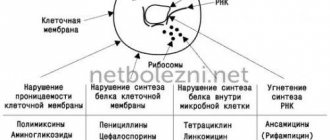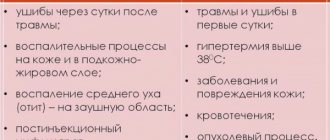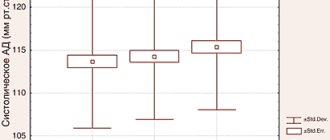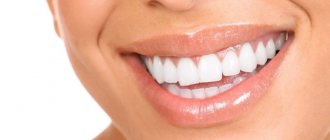What does Miramistin protect against?
The effect of the drug is detrimental to:
- Many aerobic and anaerobic gram-positive and gram-negative microorganisms.
- A number of pathogenic fungi, including yeast and yeast-like fungi.
- Some viruses, in particular the herpes virus.
- Most pathogens that cause sexually transmitted infections: chlamydia, trichomonas, gonococci, etc.
Among other things, the drug also affects hospital strains of pathogenic bacteria that are highly resistant to antimicrobial therapy. Therefore, Miramistin in such cases helps to increase the effectiveness of antibiotic therapy.
Russian medicinal antiseptic drug of a new generation
Miramistin® is an original drug developed on the basis of a unique benzyldimethyl-myristoylamino-propylammonium molecule. The production of the drug is carried out according to international GMP standards, which guarantees the high quality of the products at all stages. Currently, production is localized in the Kaliningrad region. The drug belongs to the group of quaternary ammonium compounds; the biological activity of the drug is based on the interaction of the molecule with the outer membranes of microbial cells. As a result of exposure to the benzyldimethyl-myristoylamino-propylammonium molecule, the structure and function of microbial cell membranes are disrupted, their osmotic balance is disrupted, and subsequent rapid lysis occurs. At the same time, the structure of the drug molecule is selected in such a way that it has practically no effect on the membranes of human cells, since the lipids that make them up have a significantly longer radical length and therefore hydrophobic interactions with benzyldimethyl-myristoylamino-propylammonium molecules do not occur.
Thanks to the unique properties of the molecule and the selected concentration, the drug Miramistin® has a wide spectrum of antimicrobial action. The drug has a pronounced antimicrobial effect against gram-positive and gram-negative, aerobic and anaerobic, spore-forming and asporogenous bacteria in the form of monocultures and microbial associations, including hospital strains with multidrug resistance to antibiotics. It has an antifungal effect on yeast-like fungi, dermatophytes, ascomycetes and other pathogenic fungi. It has an antiviral effect and is active against complex viruses. Under the influence of the drug, the resistance of bacteria and fungi to antibiotics is reduced.
A comprehensive study of the pharmacological properties of the drug made it possible to establish that, along with antimicrobial properties, Miramistin® stimulates reparative processes and has an immunomodulatory effect. When used in combination, the ability of the drug to slow down the development of microbial resistance to antibiotics was noted.
The drug is successfully used for the treatment and prevention of infectious and inflammatory diseases of various etiologies and localizations. The successful combination of pharmacological properties determines the widespread use of the drug in various fields of medicine, including otorhinolaryngology, dentistry, surgery, traumatology, obstetrics and gynecology, combustiology, dermatovenerology, urology, etc.
What is Miramistin used for?
The drug is widely used by doctors of several specialties:
- Traumatologists and surgeons use the solution to prevent the suppurative process, as well as to treat purulent wounds.
- Obstetricians and gynecologists prescribe Miramistin for the treatment of postpartum and postoperative sutures, as well as as part of the treatment of inflammatory diseases of the female genital organs.
- Dermatovenerologists use the product for the auxiliary treatment of fungal diseases such as dermatomycosis and mucosal candidiasis.
- Urologists treat acute and chronic urethritis and urethroprostatitis with Miramistin.
- ENT doctors prescribe the drug as part of complex therapy for tonsillitis, laryngitis, otitis, and inflammatory diseases of the sinuses.
- Dentists use the solution to treat stomatitis, gingivitis, and periodontitis. Miramistin is also a means of preventing inflammatory diseases of the oral cavity.
The drug is also used to treat burns and for antiseptic treatment of wounds before dermatoplasty.
Finally, Miramistin is a popular and very effective means for individual prevention of sexually transmitted diseases.
Indications for use of the drug Miramistin
surgery, traumatology: prevention of suppuration and treatment of purulent wounds: treatment of purulent-inflammatory processes of the musculoskeletal system. Obstetrics - gynecology: prevention and treatment of suppuration of postpartum injuries, wounds of the perineum and vagina; postpartum infections; inflammatory diseases of the genital organs (vulvovaginitis, endometritis). Combustiology: treatment of superficial and deep burns of II–IIIA degrees, preparation of burn wounds for autodermoplasty. Dermatology, venereology: treatment of candidiasis of the skin and mucous membranes, mycoses of the feet and large folds; prevention of sexually transmitted diseases (syphilis, gonorrhea, genital herpes, genital candidiasis). Urology: complex treatment of acute and chronic urethritis and urethroprostatitis of specific (chlamydia, trichomoniasis, gonorrhea) and nonspecific nature. Dentistry: treatment of periodontitis, stomatitis, hygienic treatment of removable dentures. Otolaryngology: complex treatment of acute and chronic otitis, sinusitis, tonsillitis, laryngitis.
How to take Miramistin
Before you start using the drug, you must carefully read the instructions for use. If the package contains a sprayer, then first remove the cap from the bottle, then install the spray nozzle and perform 1-2 control presses. After this, the product is ready for use.
Miramistin has certain features of use for each type of pathology. Thus, when treating wound surfaces, including burns, this product can be used to treat both the wound itself and tampons for dressings.
For the treatment of ENT diseases, in particular, sore throat and pharyngitis, Miramistin is used both for irrigation and for gargling. The frequency and duration of use is indicated by the doctor based on the severity of the pathological process. Another method of treating diseases of the ENT organs is inhalation with Miramistin.
For diseases of the oral cavity, in particular for stomatitis, rinse with Miramistin 3-4 times a day.
Local therapy of infectious and inflammatory diseases of the respiratory system
As an advertisement
Miramistin® (benzyldimethyl [3-(myristoylamino)propyl]ammonium chloride monohydrate) is a drug from the group of cationic surfactants. Numerous studies have confirmed that Miramistin has a pronounced antimicrobial effect against gram-positive and gram-negative bacteria, fungi, complex viruses, protozoa, aerobic, anaerobic flora, found in the form of monocultures and microbial associations, including strains multidrug-resistant. Miramistin is a drug with low toxicity and does not have a local irritant, allergenic, mutagenic, carcinogenic or embryotoxic effect. Its immunoadjuvant effect was revealed. The biological action of Miramistin is based on its direct effect on the cell membranes of microorganisms. The predominant mechanism is the hydrophobic interaction of its molecule with lipid membranes, leading to fragmentation and destruction of the microbial membrane. In this case, part of the Miramistin molecule is immersed in the hydrophobic region of the microbial cell membrane and destroys the supra-membrane layer, loosens the membrane and increases its permeability to large molecular substances. In addition, the Miramistin molecule changes the enzymatic activity of the cell, inhibiting the enzymatic systems of membranes, which leads to the suppression of the vital activity of the microbial cell. Miramistin has a much weaker effect on human cell membranes, since they have longer lipid radicals and the hydrophobic effect with the drug molecules is very weak.
Antiviral activity of Miramistin
The virucidal properties of Miramistin were studied in relation to laboratory strains of influenza virus (H3N2), adenoviruses, herpesviruses type I and II, coronaviruses OC43, hepatitis, ECHO type 6, polioviruses type 2, Coxsackie B1 and B6, coliphage T2, as well as human immunodeficiency virus (HIV). Antiviral activity was determined in comparison with the antiviral activity of a number of well-known antiseptics: Aurisan, Chlorhexidine, Etonium, Dioxidine, Rokkala, Nonoxynol, TVIN-20. The data obtained showed that Miramistin is superior in its virucidal activity to other antiseptic drugs and antimicrobial compounds. Moreover, complex viruses that have a supercapsid shell are highly sensitive to Miramistin, that is, influenza viruses, herpes, coronoviruses, HIV, etc. The minimum inhibitory concentrations (MIC) of some surface-active antiseptics for viruses are presented in Table. 1.
Antibacterial and fungicidal properties of Miramistin
The antimicrobial activity of Miramistin has been studied in relation to various types of pneumotropic microflora. When determining the MIC of growth of pathogenic flora, it was found that Miramistin inhibits the growth of a number of microorganisms (Table 2).
The effect of Miramistin on mucociliary clearance and the restructuring of the ciliated epithelium of the upper respiratory tract
The transport function of the ciliated epithelium of the upper respiratory tract is one of the important components of systemic immunity in patients with diseases of the respiratory system. The effect of Miramistin on the transport function of the ciliated epithelium of the upper respiratory tract was studied. The experiment was carried out in healthy patients (volunteers) using a saccharin test, using a polymer film with methylene blue, and also by studying a radionuclide label. All methods used revealed a complete absence of the inhibitory effect of Miramistin on mucociliary clearance of the upper respiratory tract.
The results obtained allowed us to conduct a similar study in patients with sinusitis, who received Miramistin and a traditional antiseptic - 0.02% Chlorhexidine solution as local therapy. At the beginning of treatment, all patients experienced a decrease or cessation of the transport function of the ciliated epithelium. During therapy, there was a tendency to normalize the rate of mucociliary clearance. Moreover, it was stated that a long “experience” of the disease or a long period of use of vasoconstrictor drops had a negative effect on the rate of normalization or improvement of mucociliary clearance. The results of the study showed that the speed of the transport function of the ciliated epithelium of the nasal cavity in patients with sinusitis in the dynamics of treatment with Miramistin is significantly higher than during treatment with Chlorhexidine solution. Moreover, when using chlorhexidine, in half of the observations there was inhibition of the transport function of the ciliated epithelium.
The influence of Miramistin on the immunological status of patients with diseases of the respiratory system
The effect of Miramistin on immunological parameters was studied in patients with acute and chronic sinusitis, nonspecific endobronchitis, as well as in patients suffering from bronchial asthma. To assess the immunomodulatory effect of Miramistin, indicators of specific and nonspecific protection in patients with various forms of sinusitis were studied. The levels of immunoglobulins A, G, M, E, lysozyme, properdin, glycogen, alkaline and acid phosphatases, the phagocytic index and phagocytic number of macrophages in the blood and lavage fluid of the maxillary sinuses, and the levels of CD-lymphocytes in the blood were studied.
As a result of the study, positive changes were noted in all studied indicators. The degree of changes varied and depended on the form and duration of the disease. The best results were obtained with catarrhal and allergic forms.
In a comparative assessment, it turned out that Miramistin contributes to a more pronounced normalization of immunity parameters than Chlorhexidine solution. For example, in chronic allergic sinusitis, the effect on the level of eosinophilia was more pronounced than that of Chlorhexidine solution.
Due to the fact that, according to the scientific literature, Miramistin has certain properties of an extra-immune corrector, in vitro studies of the effect of this drug on the functional activity of phagocytes obtained during bronchoscopy from bronchoalveolar lavages (BAS) in patients with nonspecific endobronchitis were conducted. The phagocytic number, phagocytic index, NCT - test with neutrophils and alveolar macrophages were studied.
The results of the experiment showed that Miramistin is able to stimulate both the phagocytic activity of neutrophils and the realization of reserves of oxygen-dependent bactericidal activity of phagocytes. To confirm clinical effectiveness, similar tests were carried out after a course of local therapy in patients with endobronchitis. It was found that the phagocytic activity of neutrophils isolated from ALS patients treated with endobronchial administration of Miramistin was significantly higher than in patients treated locally with conventional antiseptics.
To assess the immunological status of patients with bronchial asthma, indicators of systemic and regional immunity were studied: the total number of peripheral blood lymphocytes, the absolute and relative number of T-lymphocytes (E-ROC), the reaction of blast transformation of lymphocytes (RBTL) to phytohemagglutinin (PHA), concanavalin-A (con-A), lipopolysaccharides (LPS), subpopulation composition of T cells, absolute and relative number of B cells (EAC-ROC), content of immunoglobulins M, G, A, level of circulating immune complexes, as well as absorption capacity and NBT- test of macrophages isolated from ALS.
As a result of treatment in the form of endotracheal administration of Miramistin, an increase in the indicators of the T-link of immunity was noted, which was manifested in an increase in the absolute and relative number of T-lymphocytes, improvement in the functional activity of T-cells, as evidenced by an increase in RBTL indicators on PHA and Con-A, as well as in normalizing the number of theophylline-sensitive and reducing theophylline-resistant lymphocytes. Less significant changes were noted on the part of the B-link of immunity. They consisted only of an increase in the level of IgG and a decrease in IgE.
Methods of using the drug Miramistin
Miramistin in the treatment of laryngitis
For superficial laryngitis, Miramistin is administered by inhalation. Rinsing with Miramistin is also possible. In this case, the antiseptic effect of the drug plays an important role, as it eliminates inflammation, relieves swelling, dry throat, reduces dry cough, and also ensures that the patient’s voice is preserved.
Miramistin in the treatment of nasopharyngitis
The technique is based on the inhalation administration of Miramistin intranasally, using inhalers that form particles of about 10 microns in size, which predominantly settle in the nasopharynx. Also effective is instilling Miramistin (in each nasal passage) 2-3 drops, 3-4 times a day, for 7 days.
Miramistin in the treatment of tonsillitis
Treatment of patients with acute tonsillitis is carried out by gargling with Miramistin 3-4 times a day or by aerosol irrigation of the tonsils from a special bottle with a spray nozzle. The data obtained showed that the most pronounced therapeutic effect is observed in patients within 5–7 days.
Miramistin in the treatment of sinusitis
To carry out the manipulation, the usual 0.01% Miramistin solution is used. For purulent forms of sinusitis, therapeutic manipulation is carried out according to the following method. After local application anesthesia and anemization of the nasal passages, a puncture of the medial wall of the maxillary sinus is performed through the lower nasal passage. Then the sinus contents are removed by rinsing with a 0.9% sodium chloride solution. After washing, 10.0 ml of Miramistin is injected into the maxillary sinus. The manipulation is carried out daily. In case of an acute purulent process, the number of manipulations is 3-4, in case of exacerbation of a chronic process - 5-6. In parallel, drug and physiotherapeutic therapy indicated for this pathology is carried out. For exudative forms of sinusitis, vasoconstrictor drops are additionally administered intranasally (2-3 drops 3 times a day).
The use of Miramistin for other forms of sinusitis (catarrhal, acute and chronic, allergic, purulent polyposis) differs in the dose of the drug administered and the number of punctures per course of treatment. For this reason, only the distinctive characteristics of the techniques used in these forms are given below.
For catarrhal sinusitis, Miramistin is used in a dose of 7–10 ml. The drug is administered 1–2 times per course of treatment daily, 1 time per day. With exacerbation of chronic catarrhal sinusitis, the number of injections increases to 2–4 in the same dose of the drug and frequency.
For chronic allergic sinusitis, Miramistin is used in a dose of 7–10 ml. The drug is administered using a similar method. The course of therapy is 4–5 procedures.
For chronic purulent polyposis sinusitis, Miramistin is used in a dose of 10 ml. The drug is administered daily. The course of treatment is 5–7 procedures.
The effectiveness of using these techniques in treatment regimens for various sinusitis is confirmed by the results of clinical trials conducted in 430 patients with paranasal sinusitis of various etiologies. It has been clinically proven that when Miramistin is used in the treatment of catarrhal and allergic sinusitis, recovery occurs 3-4 days earlier than when using a 0.02% chlorhexidine solution. The use of Miramistin in the treatment of purulent and purulent-polyposis sinusitis allows one to achieve sanitization of the sinuses 2-3 days faster than when using a 0.02% chlorhexidine solution. The use of Miramistin for purulent sinusitis allows in some cases to avoid surgical intervention, thereby preserving the anatomical structures of the nasal cavity and paranasal sinuses. Its use effectively restores respiratory function and mucociliary clearance, without causing allergic reactions from the nasal mucosa. Confirmation of the effectiveness of Miramistin in clinical trials allows us to recommend the use of the proposed methods in treatment regimens for various forms of sinusitis.
Miramistin in the treatment of bronchitis and bronchopneumonia
Miramistin is administered by inhalation. The amount of the drug for one inhalation is 5 ml. Inhalations are carried out daily or every other day. The course of treatment consists of 8–10 inhalations, i.e. the course amount of Miramistin is 40–50 ml. When carrying out aerosol therapy, all types of inhalers are used. Each patient is instructed on the rules for taking inhalation therapy, highlighting the value of the frequency of respiratory movements and preventing the possibility of hyperventilation. After completing the procedure, a 15-30 minute rest is required.
Recently, nebulizers and metered dose inhalers, including those with spacers, have been widely used. Patients inhale medications using a mask or mouthpiece. The working gas is air or, which is preferable for bronchial asthma, oxygen. The average gas flow is 6–8 liters per minute. When using a mask, the patient must breathe through the mouth, since the nose is a good filter and can interfere with the delivery of drugs into the respiratory tract. An analysis of the dynamics of clinical parameters before and after the use of Miramistin was carried out in 120 patients with bronchitis against the background of concomitant bronchial asthma. The results showed that the most pronounced clinical effect was present in the group of patients who, in parallel with traditional therapy, received a course of aerosol therapy with Miramistin solution, while the duration of remission increased by an average of 21.8%.
Literature
- Khan M.A. Use of the drug Miramistin® in the treatment of children with acute nasopharyngitis // Treating Doctor. 2014. No. 6. Page. 93–95.
- Malanicheva T. G. //Journal of International Medicine. 2013. No. 4.
- Petrenko V. M., Dmitrieva I. A., Kirichenko I. M. Evaluation of the integral effect of using Miramistin® for the treatment of patients suffering from chronic tonsillitis / II World Asthma & COPD Forum Saint Petersburg, Russia, April 25–28, 2009.
- Krivoshein Yu. S., Rudko A. P., Sistov V. V. Miramistin is an antiseptic with immunomodulatory and regeneration-enhancing properties / Abstract. report VIII Russia national congr. "Man and Medicine." M., 2000. P. 509.
- Meshkov V.V., Bogdanov N.N., Chirkov A.V. Miramistin electrophoresis in complex treatment, medical rehabilitation and secondary prevention of chronic bronchitis and pathology accompanying or complicating their course: Methodological. recommendations. Simferopol, 1997. 18 p.
- Grishin M.N. Use of the antiseptic miramistin in the complex therapy of nonspecific suppurative lung diseases // Probl. tuberculosis. 1998. No. 1. P. 40–41.
- Kuznetsova L.V. The influence of the cationic surfactant miramistin on the immune status of patients with bronchial asthma in the dynamics of treatment // GRM of the Ministry of Health of Ukraine. 1996. 1 section. No. 87. P. 28.
- Balabantsev A.G., Zavaliy M.A. The influence of miramistin on the phagocytic activity of neutrophilic granulocytes of the mucous membrane of the upper maxillary sinuses in patients with sinusitis // Current problems of otorhinolaryngology. Dnepropetrovsk, 1997. pp. 21–22.
- Grishin M.N. Antiseptic miramistin in the complex treatment of nonspecific endobronchitis // Bulletin of physiotherapy and balneology. 1998. No. 4. pp. 33–36.
- Piletsky AM, Bobrov O. E., Grishilo P. V. The use of miramistin under ionotron conditions in the treatment of patients with infectious-dependent bronchial asthma K.: Phoenix, 2000. 75 p.
- Semenova T. B., Krivoshein Yu. S., Nemtinova E. B. Treatment and prevention of complications of herpetic infection using various forms of miramistin / Proc. report VIII Russia national congr. "Man and Medicine." M., 2000. pp. 306–307.
- Vintserskaya G. A. Functional activity of nonspecific T-helpers and suppressors in patients with pyoderma and its correction with Miramistin // Dermatology and Venereology. 1997. No. 2 (4). pp. 59–62.
- Krivoshein Yu. S., Tyshkevich L. V., Sarachan T. A. Determination of the antimicrobial activity of emulsions and aerosols containing different concentrations of miramistin / Proc. report IX All-Union. symp. on the targeted search for medicinal substances. Riga, 1991. P. 115.
- Zavaliy M.A., Balabantsev A.G., Svistov V.V. Application of miramistin for the treatment of patients with sinusitis / Proc. report VIII Russia national congr. "Man and Medicine." M., 2000. pp. 133–134.
- Irtuganova O. A., Smirnova N. S., Krivoshein Yu. S., Sistov V. V., Smirnov I. V., Grishin M. N. Activity of the antiseptic agent “Miramistin” against mycobacteria in an in vitro experiment. In the book: Miramistin: Collection of works / Ed. Yu. S. Krivosheina. M.: Medical Information Agency LLC, 2004. pp. 48–53.
- Chanez P. Remodeling of the airways in chronic obstructive pulmonary disease // Eur. Resp. Rev. 1997. Vol.7, No. 43. P. 142–145.
- Djukanovic R., Roche W., Wilson J. et al. Mukosal inflammation in asthma // Am. Rev. resp. Dis. 1990. Vol. 142, No. 2. P. 434–457.
A. M. Dunaevsky I. M. Kirichenko1
LLC "Infamed", Moscow
1 Contact information
Why is Miramistin prescribed in gynecology?
In gynecology, the drug can be used for:
- Impregnation of vaginal tampons. This method of administering an antiseptic shows good results in the treatment of cervical erosion, metritis, and endometritis.
- Douching. The method is widely used for the treatment and prevention of sexually transmitted diseases.
- Introduction into the genitourinary canal using a catheter is a method of treating urethritis and cystitis. The manipulation can only be performed by a person with medical education.
- Electrophoresis sessions. Physiotherapeutic procedures using Miramistin help cure pelvic pathologies such as salpingitis, oophoritis, etc.
The method of treatment and duration of therapy are selected by the attending physician in each specific case.
How to use Miramistin in venereology
The solution effectively prevents sexually transmitted diseases. However, it should be remembered that Miramistin will provide the expected result only if it is applied within two hours after sexual intercourse.
To prevent sexually transmitted diseases, a bottle with a special urological attachment is used. It is recommended for men to inject 2-3 ml of solution into the urethra, for women - 1-2 ml. Additionally, the drug is administered into the vagina in a volume of 5-10 ml using a gynecological applicator. The skin of the external genitalia is also treated with the solution. After treatment, it is recommended to refrain from urinating for 2 hours.
Use of the drug Miramistin
Locally. Surgery, traumatology, combustiology. For preventive and therapeutic purposes, miramistin is used to irrigate the surface of wounds and burns, loosely pack wounds and fistula tracts, and fix gauze swabs moistened with an antiseptic. The treatment procedure is repeated 2–3 times a day for 3–5 days. The method of active drainage of wounds and cavities with a daily consumption of about 1 liter of the drug is highly effective. Obstetrics - gynecology . In order to prevent postpartum infection, 50 ml of the drug is used in the form of vaginal tampons with an exposure of 2 hours for 5 days in the form of vaginal irrigations before childbirth (5–7 days), during childbirth after each vaginal examination and in the postpartum period. When delivering by caesarean section, the vagina is treated immediately before the operation, during the operation - the uterine cavity and the incision on it, and in the postoperative period, tampons moistened with 50 ml of solution are inserted into the vagina with an exposure of 2 hours for 7 days. Treatment of inflammatory diseases of the female genital organs is carried out by intravaginal administration of tampons with the drug for 2 weeks, as well as administration of the drug by electrophoresis. Venereology . For the prevention of sexually transmitted diseases, Miramistin is effective if it is used no later than 2 hours after sexual intercourse. Using the nozzle, insert the contents of the bottle into the urethra of men (2–3 ml), women (1–2 ml), into the vagina (5–10 ml) and into the urethra (1–2 ml) for 2–3 minutes. The skin of the inner thighs, pubis, and genitals is treated. Urology. In the complex treatment of urethritis and ureoprostatitis by endourethral instillation of 2–3 ml of 0.01% miramistin solution 1–2 times a day, course - 10 days. The procedure is repeated every other day. Otorhinolaryngology . In the complex treatment of purulent sinusitis, during puncture the maxillary sinus is washed with a sufficient amount of antiseptic. In the treatment of tonsillitis and laryngitis, repeated gargling with a solution of the drug is carried out. Dentistry . Treatment of periodontitis by introducing turundas moistened with miramistin solution into periodontal pockets, followed by applications to the gums for 15 minutes. During exacerbations, rinsing periodontal pockets with Miramistin using a syringe and introducing turundas moistened with the drug into the abscess cavity are used. After vestibuloplasty and frenulectomy, Miramistin is used in the form of baths on an outpatient basis. Miramistin is used for medicinal treatment of carious cavities, tooth canals after pulp extraction, and hygienic treatment of removable dentures.
At what age can Miramistin be used for children?
According to the instructions, the solution is prescribed for the treatment of pharyngitis and tonsillitis for children over 3 years of age. As a rule, in childhood, the throat is irrigated with Miramistin using a spray. The dosage of the drug increases in proportion to the age of the child. Duration of use is from 4 to 10 days, the period depends on the severity of the disease.
Do not drop the solution into the child’s nose - this can lead to irritation of the mucous membranes.
Many parents are interested in the question of whether infants can be treated with this drug. The list of contraindications for Miramistin does not include infancy, so the use of the drug is possible. However, you should not self-medicate: before use, you must consult a pediatrician.
Can Miramistin be used during pregnancy?
According to the results of numerous studies, this drug does not have an embryotoxic effect. However, its use in the first trimester of pregnancy is not advisable. Treatment with Miramistin at this time can lead to dermatitis and allergic reactions in the child.
The use of Miramistin by pregnant women is possible, but only if the drug was prescribed by a specialist. A woman must strictly follow the doctor’s instructions: follow the dosage and adhere to the recommended method of use.
Special instructions for the use of the drug Miramistin
The drug does not have a local irritant effect and does not have allergenic properties. Venereology. Urology. After treating the urethra, vagina, inner thighs, pubis and genitals with miramistin, it is not recommended to urinate for 2 hours. Use during pregnancy and lactation. Since drug resorption is almost completely absent, Miramistin can be used during pregnancy and lactation. The ability to influence the reaction rate when driving a vehicle or working with other mechanisms. During treatment with the drug, it is possible to drive vehicles and engage in other potentially hazardous activities that require increased concentration and speed of psychomotor reactions.








